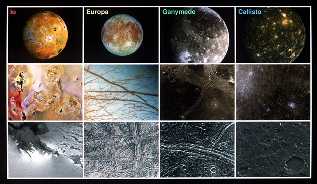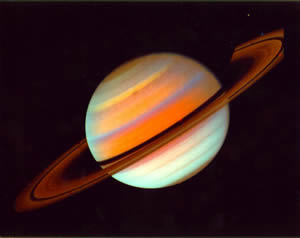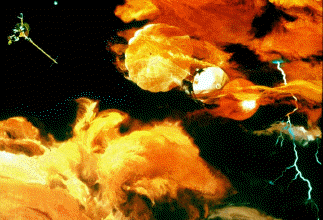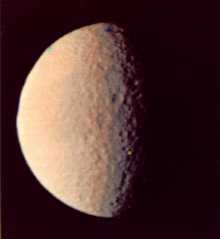This is an image of Tethys.
Click on image for full size
NASA/JPL
Tethys
Tethys was discovered by G. Cassini in 1684. Tethys is the 8th closest moon to Saturn, with a standoff distance of 294,660 km. It is one of the
icy moons, similar to the
Galilean satellites. Tethys is about as wide as the length of the Oregon coast, a width of 1050 km (700 miles).
Tethys is has a rather heavily cratered surface, with deep trenches. In appearance, this moon looks very much like Dione, Enceladus, and Rhea.
You might also be interested in:

The Galilean satellites are the 4 major moons of Jupiter, Io, Europa, Ganymede, and Callisto. In this picture, Io, and Io’s surface, are shown on the left-most end, then Europa, and its surface, then Ganymede,
...more
Like the inner planets and Jupiter, Saturn is clearly visible in the night sky. The ancient Greeks named the planet after the god of agriculture and time. It wasn't until 1655, however, that we knew Saturn
...more
Saturn has // Call the moon count function defined in the document head print_moon_count('saturn'); moons. Many of those are tiny chunks of rock or ice only a few kilometers (miles) across. One of Saturn's
...more
Saturn has // Call the moon count function defined in the document head print_moon_count('saturn'); moons. Many of those are tiny chunks of rock or ice only a few kilometers (miles) across. One of Saturn's
...more
In many respects Titan is similar to the other icy moons, but Titan is the only icy moon to have an atmosphere that can be compared to other planets'. It is natural to ask how is this possible since Titan
...more
Titan's atmosphere is a lot like the Earth's, except that it is very cold, from -330 degrees to -290 degrees! Like the Earth, there is a lot of Nitrogen and other complex molecules. There also may be an
...more
Pandora is a small moon of Saturn. It was discovered by S. Collins and others in 1980 from photos taken by the Voyager 1 spacecraft. Pandora's name comes from Greek mythology. Pandora was the first woman,
...more















